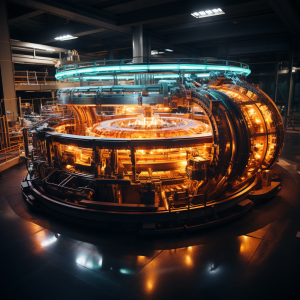
What is the difference between a conservative and a non-conservative force?
In physics, forces are often classified into two main categories: conservative and non-conservative forces. Understanding these concepts is crucial to various fields of physics, from classical mechanics to thermodynamics, and beyond. This post aims to delineate the definitions, key characteristics, and examples of both conservative and non-conservative forces.
Conservative Forces
A conservative force is a force with the property that the work done in moving a particle between two points is independent of the path taken. In other words, the total work done on an object by a conservative force is path-independent; it solely depends on the initial and final positions of the object. Importantly, the work done by a conservative force on a particle moving around any closed path is zero.
Potential Energy
The existence of a conservative force implies an associated potential energy. For any conservative force, we can define a potential energy function which is determined by the position of the object. The force can be described as the negative gradient of this potential energy.
Conservation of Mechanical Energy
In a system where only conservative forces are doing work, the mechanical energy (the sum of kinetic and potential energy) is conserved.
Examples
Examples of conservative forces include gravitational force, spring force (Hooke’s law), and electrostatic force. For instance, when you lift a book, the work you do against the force of gravity gets stored as gravitational potential energy. If you then drop the book, it will fall back to its original position, and all the potential energy will be converted back into kinetic energy. The total mechanical energy (kinetic + potential) of the book is conserved.
Non-Conservative Forces
Non-conservative forces are the counterpart to conservative forces. For non-conservative forces, the work done on an object does depend on the path taken and, crucially, is not zero around a closed path.
No Potential Energy
There is no potential energy function associated with a non-conservative force that is path independent. As a result, you can’t define a potential energy associated with non-conservative forces in the same straightforward way as for conservative forces.
Dissipation of Energy
Unlike with conservative forces, mechanical energy is not conserved in the presence of non-conservative forces. Non-conservative forces tend to convert mechanical energy into other forms of energy, such as heat or sound.
Examples
Examples of non-conservative forces include friction, air resistance, and viscous drag. Consider a block sliding on a surface with friction. If you push the block and it stops after you stop pushing, then try to slide it back to its original position, it won’t move unless you push it again. That’s because the frictional force, a non-conservative force, has done work on the block and dissipated the mechanical energy as heat.
Conservative vs. Non-Conservative Forces: A Brief Comparison
The fundamental difference between conservative and non-conservative forces lies in the concept of energy conservation. With conservative forces, mechanical energy remains constant in a system unless external forces are applied, and the work done does not depend on the path taken but only on the initial and final positions. Conversely, with non-conservative forces, mechanical energy is not conserved, and the work done does depend on the path taken.
In a sense, conservative forces “conserve” the energy of the system, transforming it from one form to another (like kinetic to potential energy and vice versa), but the total amount remains constant. Non-conservative forces, on the other hand, “dissipate” or “degrade” the mechanical energy, usually transforming it into a form like heat that is less useful for doing work.
Understanding these forces is essential in physics as it helps explain how energy is transferred and transformed. For instance, in cosmology, gravitational forces (conservative) govern the motion of planets, whereas in earth-bound systems, friction (non-conservative) plays a significant role in energy transformations.
Conclusion
The dichotomy between conservative and non-conservative forces is a cornerstone of physics. It explains a multitude of physical phenomena, from the orbits of planets to the slide of a book across a table. By differentiating between these two classes of forces, we are better equipped to predict system behavior, solve problems, and understand the world around us. In essence, conservative forces serve to transform energy without loss, while non-conservative forces tend to lead to the degradation or dissipation of mechanical energy.




